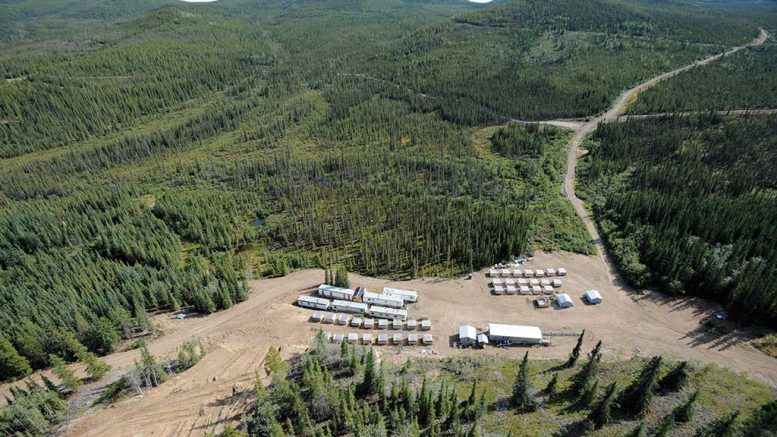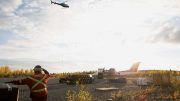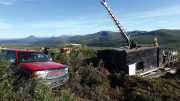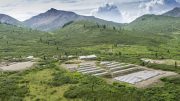With metal prices on the rise, mineral projects and mines in the Far North are once again becoming more attractive, and companies are devoting more funds this year to work programs. Here is a quick look at seven such companies.
BAFFINLAND IRON MINES
Baffinland Iron Mines operates the Mary River iron ore mine in the Qikiqtani region of northern Baffin Island in Nunavut. With headquarters in the Greater Toronto Area suburb of Oakville, Baffinland is jointly owned by ArcelorMittal and Nunavut Iron Ore.
The mine property hosts nine exceptionally high-grade, high-quality iron ore deposits that warrant their exploitation in such a remote location, with mining getting underway in the first deposit in 2015.
Baffinland notes that “because of the high grade of the iron ore, we simply mine, crush and screen the ore on-site, and then ship it directly to markets — no concentrating or processing needed. That means significantly less impact on the environment than typical iron ore operations.”
The mine’s final products of lumps and fines are then shipped through Baffinland’s port facility at Milne Inlet, 100 km from the mine site. Some 3.5 million tonnes of product are shipped out per year, all during the mid-year shipping season.
COPPER NORTH MINING
Copper North Mining’s (TSXV: COL; US-OTC: CPNVF) primary asset is its Carmacks copper project in the Yukon, which is permitted for construction and will produce 30 million lb. cathode copper per year.
The company notes that the project is being re-engineered as a copper-gold-silver leach operation, and that a May 2014 preliminary economic assessment “indicates that the addition of gold and silver recovery provides a positive improvement in project economics.”
In a second phase of engineering work, Copper North is evaluating opportunities to improve operations and lower capital and operating costs. It resumed exploration at the site in 2014 and 2015, leading to what Copper North calls a “substantial increase in oxide and sulphide resources, with the potential to extend mine life.”
For instance, an updated resource estimate for zones 2000S, 13 and 12 showed oxide measured and indicated resources of 4.3 million tonnes grading 0.47% copper, 0.13 gram gold per tonne and 1.92 grams silver per tonne.
FORTUNE MINERALS
Patience is paying off for Fortune Minerals (TSX: FT; US-OTC: FTMDF), with the once-struggling junior now riding the cobalt wave, as it advances its vertically integrated Nico cobalt-gold-bismuth-copper project. The Nico concept will see a mine and mill in the Northwest Territories that produces a bulk concentrate for shipment to a refinery, which the company plans to build in Saskatchewan.
Fortune says the products at the refinery include cobalt chemicals for high-performance, rechargeable batteries and bismuth metals and chemicals, as well as gold.
With all its assets located in North America, Fortune says it’s a reliable source of technology minerals that are “critical to a growing world economy and otherwise subject to supply chain risks from political and/or policy uncertainty, and concentration of supply.”
Fortune also owns the Sue-Dianne copper-silver-gold deposit and other exploration projects in the Northwest Territories, and can repurchase the Arctos anthracite coal deposits in northwest B.C. that were previously bought by a B.C. Crown corporation, after the project was opposed by local First Nations.
MAWSON RESOURCES
Mawson Resources (TSX: MAW; US-OTC: MWSNF) describes itself as a “leading Nordic exploration company” focusing on its combined Rajapalot and Rompas gold projects in northern Finland. Rajapalot is a sulphidic disseminated deposit, while Rompas is a vein-hosted nugget deposit.
Mawson had 15,000 metres of drilling planned for the early 2018 drilling season, regional basal till sampling, detailed ground geophysical surveying, geological mapping and prospecting.
In its April 10 release, Mawson reported results from nine drill holes at Rajapalot, with eight holes intersecting gold mineralization and the best hole, No. 118, cutting 5 metres grading 12.4 grams gold per tonne from 381 metres, within a broader mineralized zone of 23.1 metres at 3.4 grams gold.
SEABRIDGE GOLD
Toronto-based Seabridge Gold (TSX: SEA; NYSE: SA) has full ownership in four substantial projects: KSM in northwestern B.C., Courageous Lake in the Northwest Territories, Iskut in B.C. and Snowstorm in Nevada.
KSM hosts a resource of 2.2 billion tonnes at 0.55 gram gold per tonne, 0.21% copper, 2.6 grams silver per tonne, 10.2 billion lb. copper and 183 million oz. silver, or 38.8 million oz. gold; while Courageous Lake has a resource of 91 million tonnes at 2.2 grams gold, or 6.5 million oz. gold.
On April 10, Seabridge announced a non-brokered private placement of 1 million flow-through shares priced at $17.16 per share (or a 27.1% premium to that day’s closing price), for gross proceeds of $17.16 million. Seabridge says the proceeds will be earmarked for a 2018 exploration program at KSM.
TMAC RESOURCES
Toronto-based TMAC Resources (TSX: TMR; US-OTC: TMMFF) is producing gold at its remote, wholly owned Hope Bay gold project in northern Nunavut, with its first gold pour at the Doris mine and mill complex in February 2017, and commercial production achieved in the second quarter of 2017.
TMAC’s broader Hope Bay project encompasses the Hope Bay greenstone belt, which is 80 km long and 20 km wide. TMAC has three camps in the belt and infrastructure that includes a 1,000-tonne-per-day processing plant, air strips, roads, fuel storage, a port, power plants, administration, geology and lab buildings, and underground mine development at the Doris mine and Boston development site.

TMAC Resources’ Hope Bay gold project in Nunavut. Credit: TMAC Resources.
TMAC and past operators Newmont Mining, Miramar Resources and BHP Billiton have so far spent $1.5 billion on infrastructure for the project since 1988.
TMAC expects commercial production at the belt’s Madrid and Boston deposits in 2020 and 2022.
Longtime, high-level BMO Capital Markets investment banker Jason Neal recently left BMO to become TMAC’s president and CEO.
TRIUMPH GOLD
Triumph Gold’s (TSXV: TIG; US-OTC: TIGCF) Freegold Mountain project is located in the Yukon’s Dawson Range, and covers what Triumph calls a “highly prospective section of the Big Creek fault zone” that hosts three deposits: the Nucleus gold deposit, the Revenue copper-gold-moly-silver deposit and the Tinta Hill polymetallic vein system, plus other gold showings.
In March Triumph mobilized a field crew to the Freegold Mountain property to carry out a 1,900-metre diamond drill program targeting a new porphyry system in the Keirsten zone.
Triumph’s vice-president of exploration Tony Barresi said in a release that “phase-one drilling of the Keirsten zone demonstrates Triumph Gold’s commitment to test and advance the exploration concept that Revenue and Nucleus are not discrete deposits, but instead they are parts of a 5 to 6 km long, magmatic-hydrothermal mineralizing system, with porphyry and epithermal components. The Keirsten zone is centred almost exactly between the Revenue and Nucleus deposits and represents a high-priority exploration target, as a potential core or focus of the broad mineralizing system.”






Be the first to comment on "Far North Snapshot: Seven companies active in the Arctic and near-Arctic"